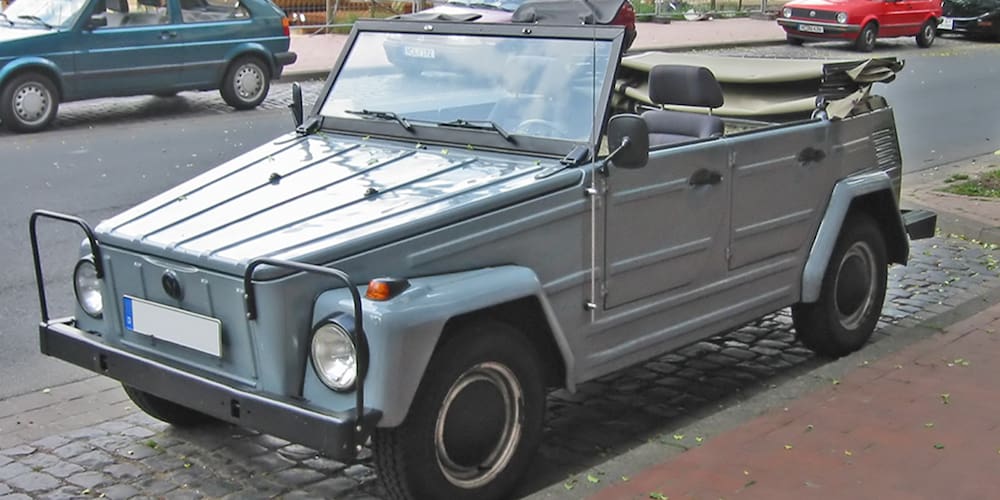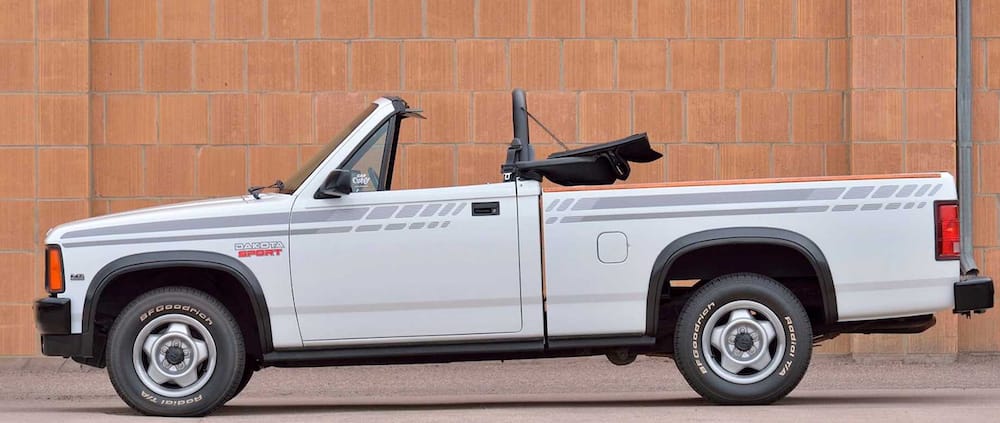The Quirkiest Cars on American Roads
Americans drive so many different vehicles that anyone who spends much time on the road sees some intriguing, unusual cars a few times each month. If there were a contest for the quirkiest car on the road, it would be impossible to choose just one.
Vehicle customization makes cars more exciting, but the cost keeps that out of most buyers’ reach. If you want to drive a quirky car without investing your life savings in the deal, you should be able to pick from mass-produced models.
Many foreign car manufacturers create cool designs and features, but getting your hands on one of those vehicles isn’t easy. High-end imports are expensive and hard to come by. Still, if you ever see a Sunbeam Alpine from the 1950s or 1960s, you may want to find one and restore it.
Most of the cars and trucks listed below were mass-produced for the American market, although some of them had short production runs. If a vehicle had a production run of at least a few thousand units, you might see one on the road. And you may be able to find one to own if you like them.
You may still have to haggle over price and save up for a particular purchase. The older a vehicle model is, the less likely you’ll find one available.
1 – The Volkswagen Thing
The official or international name for this line of vehicles is Volkswagen Type 181. Volkswagen built several models from 1968 through 1983, but the American-market Volkswagen Thing was only produced in 1973 and 1974. Only intended to be a transitional vehicle until a Europa Jeep could be made, the Type 181 was manufactured over so many years because the Europa Jeep project ended prematurely.
These vehicles have a distinctive rectangular shape with sharp corners. The basic model is a 4-door convertible with a front windshield that folds down. Customers could request a vinyl hardtop and an auxiliary heater so that you may find some models with those options.

Volkswagen initially created the car for the West German army, but civilian models went up for sale in West Germany, the United Kingdom, the USA, Mexico, South America, and Italy. You may have seen one of these models in movies from the 1960s and 1970s.
Volkswagen tinkered with the design but withdrew it from the U.S. market after two years because it failed to meet U.S. safety standards. Despite that setback, the Type 181 cars remained prevalent in other nations for several years.
2 – The Subaru BRAT
Although American roads once teemed with small trucks and the Chevrolet El Camino hybrid coupe/pickup truck, you don’t often see this quirky half-car, half-truck anymore. But whereas the El Camino was ubiquitous among small-town drivers who needed both a car and a truck, the Japanese-made Subaru BRAT looked like the El Camino’s little brother.

The BRAT acronym stands for “Bi-drive Recreational All-terrain Transporter.” This model was developed in the late 1970s and sold in countries like Australia, the United Kingdom, and the United States. The international markets used names like 284, Brumby, MV, Shifter, and Targa.
The U.S. and Canadian models featured rear-facing plastic jumpseats in the cargo bed. The BRATs were also equipped with 4-wheel drive and standard transmissions, although automatic transmissions came as options for the last 2 model years (1983 and 1984).
President Ronald Reagan owned a Subaru BRAT preserved by Young America’s Foundation, which owns his former ranch.
You’ll occasionally see these vehicles featured in movies and T.V. shows.
3 – Dodge Dakota Sport Convertible
Convertible pickup trucks are not rare, but they are unusual. Considering the abuse many of these vehicles endure on the job, there isn’t much need for an open roof experience. But some people love their trucks so much they want the full experience – mud, sun, and power-hauling all wrapped into one neat package.
Dodge lined the cab with soft burgundy upholstery and carpeting in an almost in-your-face gesture to the environment. The rollbar may seem like an invitation for 4-wheeling in the Rockies, but it’s there for styling and to support the fabric roof.

Only a few thousand of these short-lived models came off the production line. Dodge contracted the conversion of standard pickup trucks to convertibles to Michigan-based American Sunroof Company (now known as American Specialty Cars).
This vehicle might make you wonder what the point of it was, but you still occasionally see them.
4 – Chevrolet SSR
It almost looks like one of the vintage cars from the Dick Tracy movie starring Warren Beatty. That’s intentional. The SSR is a truck that looks like a retro car. GM’s design was inspired by Chevrolet‘s classic Advanced Design trucks from the 1940s and 1950s.
The SSR features a retractable hardtop, making it a convertible in a class of its own. There was a removable hardtop for the cargo bed. The SSR‘s body consisted of formed steel, similar to the truck’s bodies that inspired it.

Despite its sleek styling and unusual features, the SSR failed to attract a loyal customer base. About 24,000 were manufactured from 2003 to 2006 before G.M. closed down the factory. They literally do not make vehicles like this anymore.
5 – eMoke Beach Cruiser
The original Moke is a British-designed vehicle developed for the British military in the 1950s. It quickly became a favorite with civilian drivers around the world. Mini Mokes are familiar to drivers around the world.
Although introduced to the United States market, the Mini Moke only found a place in recreational activities.

The eMoke is an all-electric vehicle with a 40-mile range and 25-MPH cruising speed. You won’t see it on Interstate highways, but it’s popular on the West coast, where beach culture remains strong. It’s also street legal, at least for roads with low-speed limits.
The standard package includes a canvas roof for the roll bars, and the manufacturer claims there are 1,000 ways to customize the vehicle.
6 – Chrysler Cordoba
The Chrysler Cordoba is most famous for its Corinthian leather, emphasized by actor and spokesperson Ricardo Montalban in numerous T.V. commercials and radio spots. The phrase “Fine Corinthian leather” confused many people who wondered what was so special about leather from Corinth.
Some people speculate the name describes the styling of the leather upholstery, which loosely resembles Greek columns. When T.V. talk show host David Letterman asked Montalban what Corinthian leather means, Montalban responded, “nothing.”

The Cordoba had a distinctive appearance and comfortably seated tall and large passengers. It was marketed as a low-end luxury vehicle but was quite affordable for many middle-class families. Unfortunately, low fuel efficiency compared to modern vehicle designs killed demand for the heavy, V8-powered Cordoba.
The original production run lasted from 1974 to 1979. A second-generation Cordoba rolled out of the factory in 1983 as part of a campaign to re-imagine the car in a more fuel-efficient and consumer-appealing way. Unfortunately, the public appreciated the original design more, and the line eventually closed down.
7 – AMC Matador
American Motors Corporation was formed by the 1954 merger of the Hudson Motor Car Company and the Nash-Kelvinator Corporation. The company was innovative and experimental, introducing distinctive designs every few years that stood out from the Big 3 automakers’ body styles.
The AMC Matador is the 3rd generation in a design style that began with the Rambler Classic mid-sized car. The 2nd generation style was the AMC Rebel. Both the Rambler Classic and the Rebel were sold as sedans and station wagons. The Matador sold as 2-door and 4-door sedans, a station wagon, and a sports coupe (in its second phase).

The vehicles were popular with police and other government agencies, as well as the military. Some NASCAR drivers also used matadors, and it won some races.
The first generation Matador was manufactured from 1971 to 1974. AMC re-engineered the car to meet new safety requirements. Consumers could buy a more fuel-efficient straight-6 or V8 model.
AMC continued to experiment with the design to make it more appealing to consumers, but by 1978 declining sales forced AMC to discontinue production. Renault acquired the company in 1979.
What makes the Matador so distinctive is that it came in so many styles, including limited edition modifications. The uninitiated consumer could look at two Matadors side-by-side and either not realize they were the same model or were two different models, depending on design variations.
8 – 1991-6 Ford Escort G.T.
Sold in both Europe and the United States, the box-shaped Escort series was considered anything but sexy by American drivers. It was a reliable low-end vehicle that offered mediocre horsepower and a rear hatch instead of a trunk.
Consumers were more loyal to the standard model Escort than the sport-styled Escort EXP. EXP production ended in 1988. Over the next 2-1/2 years, Ford leveraged its relationship with Japanese automaker Mazda to upgrade its lower-end vehicle designs.

Things became interesting for new car buyers with the introduction of the Ford Escort G.T. The body style offered a more rounded shape, sleek contour lines, manual transmission, a spoiler on the back, a sunroof, and satellite radio. Disc brakes also came standard.
The 1990s Escort G.T. was eye-catching and fun to drive, had more horsepower than Escort drivers were used to, and became an almost instant classic. Collectors love to buy and restore old G.T.s. It doesn’t look or feel like its model siblings.
Conclusion
What makes car counting so much fun for families and enthusiasts is a great variety of makes, models, and customizations. But most vehicles now resemble each other to the point of near-obscurity. There may be practical safety and fuel economy reasons for the near-uniform shape of cars, but some of the fun of buying and driving a vehicle has vanished.
The popularity of SUVs and pickup trucks hasn’t killed design innovation for sedans and sports cars, but manufacturers have abandoned many old ideas. Those quirky car designs are often enough to make you turn your head. And the old-timers remember when they were young, and cars were cool.





Leave a Reply
Want to join the discussion?Feel free to contribute!